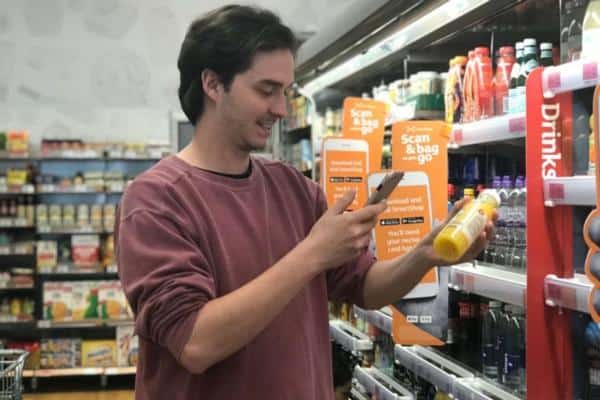Sainsbury’s says it is still seeing strong online demand for groceries, continuing well after the end of the last lockdown. Some 18% of its grocery sales were made online in the first quarter of its financial year.
The supermarket today posted a 1.6% rise in total retail sales, excluding fuel, in the first quarter of its financial year. There was a more marked rise in online grocery sales, which grew by 29% in the 16 weeks to June 26 compared to the same time last year. Grocery sales across all channels rose by 0.8%, suggesting that Sainsbury’s customers have made a significant shift online. Online grocery sales at the supermarket were 142% up on two years ago, before the pandemic hit.
In today’s statement, Sainsbury’s says: “As restrictions continue to ease, customers are beginning to return to more normal shopping patterns, with online demand reducing gradually from peak levels and transaction numbers increasing in stores. However, online remains very popular, accounting for 18% of our grocery sales this quarter against 8% in the first quarter of 2019/20. We are encouraged by the number of customers who shopped online with Sainsbury’s for the first time during the pandemic who have become loyal customers, shopping online and in-store. We continue to gain online market share from our competitors.”
As well as selling online through its own websites, Sainsbury’s now offers a range of faster deliveries. Its 60-minute Chop Chop delivery service is now operating in 49 shops, while Uber Eats and Deliveroo are delivering from 230 shops, of which 42 stores were added in the latest quarter.
General merchandise sales at Argos, Tu and Sainsbury’s
General merchandise sales fell by 1.4% from the higher than usual levels of sales seen in last year’s first lockdown, except for Tu clothing sales, which grew by 57.6% on last year. General merchandise sales at Argos were 3.7% down on last year, when the retailer benefited as competitors were closed and good weather brought forward seasonal sales. But they were 6.7% ahead of the same time two years ago, while at Sainsbury’s supermarkets they were 11.2% up on last year, and 0.9% up on two years ago.
During the quarter the retailer opened 20 Argos stores inside Sainsbury’s supermarkets, taking the total of small format digital stores to 356, and closed 14 standalone stores, leaving 387 remaining. The retailer continues to cut costs in logistics, as previously announced, consolidating depots and opening its first Argos local fulfilment centre in Bristol in June.
Sainsbury’s group says that sales in all categories were ahead of its expectations and it is now forecasting a full-year underlying pre-tax profit of at least £660m. The retailer is using some of that benefit to cut prices, with a new £50m investment in targeted price reductions on everyday food products.
Simon Roberts, chief executive of Sainsbury’s, says that the retailer is making good progress in its plan to put food back at the heart of the business. He says: “Our colleagues are doing a brilliant job of giving great customer service and continuing to adapt as restrictions ease and shopping habits change. Over the coming months we expect to see customer shopping patterns normalise further and we are well set up to serve them however they want to shop.
The retailer says that sales from its convenience stores are recovering post-lockdown as shoppers return to city centres, and it has also aded three more neighbourhood hub stores, taking it to a total of seven.
Sainsbury’s is ranked Leading and Argos is ranked Elite in RXUK Top500 research.










